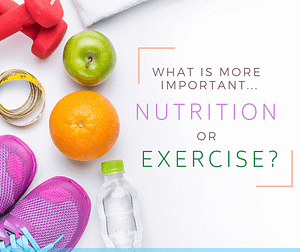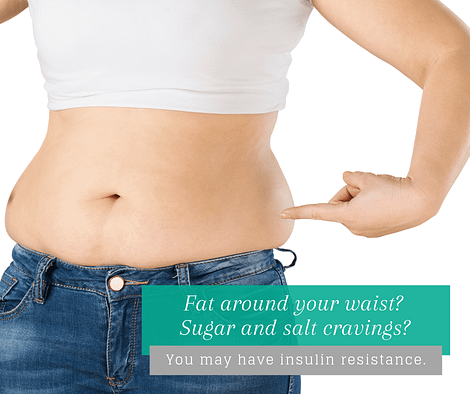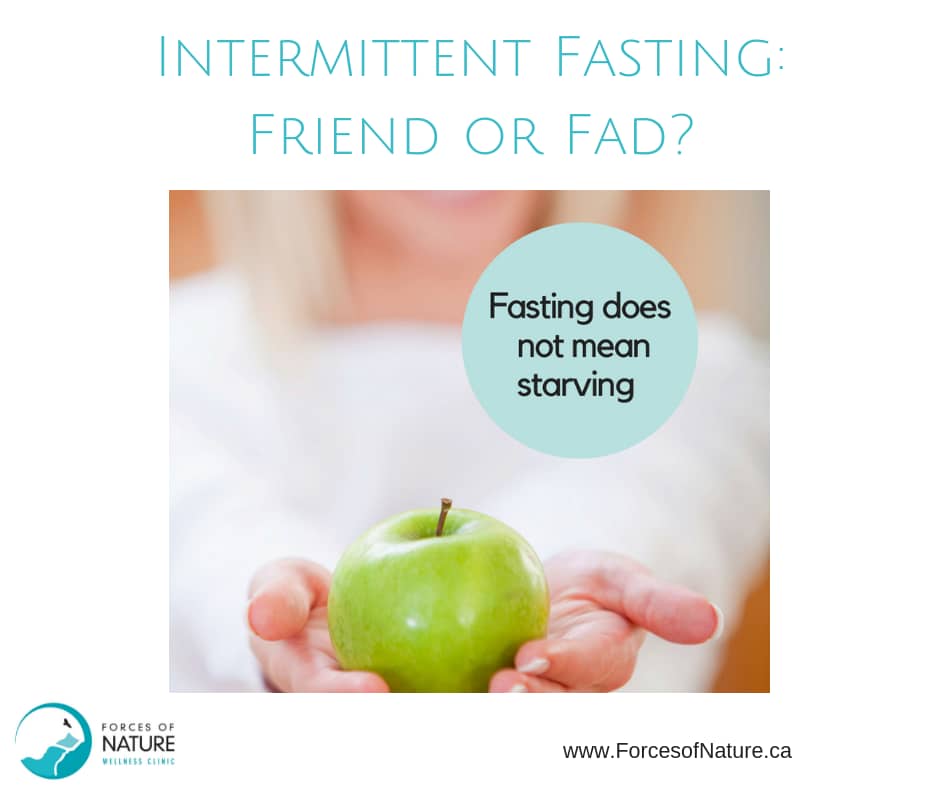
Which is More Important Diet or Exercise?
Eat less, exercise more. You’ve probably heard that this is the secret to weight loss. So, it makes sense that if you want to lose weight quickly, or if you’ve hit a weight-loss plateau, you need to really ramp up the exercise, right?
Unfortunately, despite the fact that it makes sense, many people experience frustration with this approach. Why aren’t they successful? Research suggests that weight loss is more complex than a simple “calories in vs calories burned” formula. In fact, our hormones play a bigger role in regulating our metabolism than many people realize. As a result, maintaining a diet that reduces insulin levels and encourages hormonal balance is more effective than hours of exercise.
Why Exercise Can’t Make Up for a Bad Diet
Consider a woman training for a 10-K race. She runs from half an hour to an hour every day. With all of that exercise, she figures she should be losing weight and should be able to treat herself every now and then. However, she’s plagued by some remaining pounds that she just can’t shake.
What’s happening? Let’s take a look at the math. As a 140-pound woman, she burns about 300 calories in a 30-minute run. That’s fantastic! In addition to the calorie burn, she experiences better cardiovascular health, improved mood, a sense of accomplishment and countless other benefits from her runs.
However, those 300 calories are a lot easier to consume than they are to burn. Simply put, she can easily take in an extra 300 calories by eating a small bagel or sipping on a sweet coffee drink.
In fact, studies have shown that exercising often leads to an increase in food consumption. Some of this effect is due to the impact that our hormones have on our appetite. Some of it simply is because we tell ourselves, consciously or subconsciously, that we deserve a treat after a workout.
The Science Of Diet vs Exercise
Interestingly, one study found that about 30 minutes per day of exercise is more effective for losing body fat than longer periods of working out. One reason for this is that our everyday movement (the things we do on a normal day that are not “formal” exercise) may decrease if we’re tired from a long workout. As well, the hormones that stimulate our appetite increase when our bodies are over-stressed. But, research has also shown that our appetite-increasing hormone (ghrelin) goes down when we exercise. So the trick is to exercise, but not to the point where it is perceived as additional stress by your body.
What does this mean for your weight-loss efforts? All told, scientists conclude that diet is more effective than exercise for weight loss. However, the best approach is still to combine the two. That’s because it is important not to dismiss exercise’s role. Working out improves your metabolism, particularly if you add strength training to your routine. Strength training builds muscle mass. Muscle tissue is more metabolically active. That means that it burns more calories, even while you are sleeping. And, of course, exercise offers countless other benefits. These range from better skin and immune function to improved digestion to deeper sleep. It’s an important part of a healthy, balanced life.
A 2009 review of randomized controlled trials comparing diet-plus-exercise vs. diet-only for weight loss among obese or overweight adults found that diet-plus-exercise interventions provided significantly greater weight loss than diet-only interventions.
Another study from 2014 determined that weight loss programs that are based on physical activity alone are less effective than programs that included combined behavioral weight management strategies in both the short and long term.
The Most Effective Formula of Diet vs Exercise For Weight Loss
So, what is the ideal weight loss formula? The best approach is one that reflects your unique health profile. Your age, gender, overall health, and lifestyle all impact your metabolism. That’s why it’s important to work with your naturopathic doctor to develop a strategy that works for you. We want to make sure that there isn’t something else going on that’s sabotaging your ability to reach your weight loss goals.
Why Can’t You Lose Weight?
The kind of impediments to weight loss that our Naturopathic Doctors will help you seek out include:
- Hypothyroidism. This is a common cause of symptoms like weight gain, fatigue, hair loss, and mental lethargy. Our naturopaths offer more extensive testing for your thyroid than anyone else.
- Hormone imbalances. Certain hormones increase your metabolism (like testosterone and progesterone) while others contribute to weight gain (like estrogen). Our naturopaths also offer more extensive hormone testing than anyone else and have many tools to fix hormone imbalances.
- High stress and high cortisol. Stress jacks up your cortisol production to help you handle the stress. However, we all know that cortisol causes your body to deposit fat right around your mid-section. That pesky belly fat won’t budge unless you can moderate the effect that stress has on your body. Our naturopaths check cortisol levels and assess your adrenal glands. We use adaptogenic herbs to moderate cortisol production and help you handle stress more easily.
Weight Loss Plateau – Tips for Moving the Needle
A few simple changes help you make the most of the “diet” part of the equation so that you experience the weight-loss benefits of both diet and exercise
Intermittent Fasting: What is the Best Way to do it?
Intermittent fasting means integrating scheduled periods of abstaining from food into your life. There are many different approaches you could try. To name a few popular examples, some people eat regular meals five days a week and fast for the other two. Many people follow an “8-16” schedule, in which they have an 8-hour eating window each day. For example, they only eat between 10:00 a.m. to 6:00 p.m. every day, then they fast for 16 hours from 6 p.m. to 10 a.m. During the fasting window, they consume only water.
Studies show that the effectiveness of these periods of fasting goes beyond the missed calories. In addition, intermittent fasting has a positive effect on your hormones. For example, periods of not eating keep your insulin levels in check. When your food is digested in your gut, the carbs in it are converted to sugar and then used for energy. But, excess sugar that you don’t burn is stored as fat, with the help of insulin. If your insulin levels drop, your fat cells release this stored sugar. In addition, fasting increases your levels of human growth hormone (HGH) which leads to healthier testosterone levels, muscle growth, and fat loss.
What time of day should you do Intermittent Fasting?
Some say that it doesn’t matter. I think it does matter. Research suggests that it is beneficial to consume your calories earlier in the day. This gives you time to burn off those calories. Studies also show that you produce less insulin when you take in your calories earlier in the day, rather than later. I recommend that my patients aim to set a fasting window from 5 or 6 p.m. to 9 to 10 a.m. and eat from 9 to 5 or 10 to 6.
Keep a food diary
One strategy that is effective for weight loss is to carefully monitor what you’re eating in a food diary. Making this a habit helps to prevent the tendency many of us have to overcompensate for an exercise session or grab a quick snack without realizing the extra caloric intake.
If you prefer to use technology for this, apps like FitBit and Samsung Health will monitor your caloric intake and activity level to make sure that you aren’t underestimating how much you eat and overestimating how active you are.
Focus on natural, nutrient-dense whole foods.
When you want to get the most nutritional value from the foods you eat, “clean” eating is the best approach. Often when people hit plateaus in their weight-loss efforts, hormone imbalances are to blame. That means that no amount of extra exercise will help break the plateau. Nutrient-dense foods are full of vitamins and minerals that restore hormonal balance. So try cutting out processed foods, refined sugar, and alcohol in favor of whole foods like vegetables and fruit.
Whole foods also supply prebiotic fiber. Research on this type of fiber indicates that it helps to reduce a hormone in your blood called ghrelin. Ghrelin is responsible for increasing your appetite. Prebiotic fiber also reduces an inflammatory marker called CRP or C-Reactive Protein. Reducing CRP means reducing inflammation. Reducing inflammation helps you lose weight by improving energy and exercise tolerance but also by improving insulin sensitivity. Foods that are high in prebiotic fiber include asparagus, burdock, chicory, dandelion root, Jerusalem artichoke, leeks, and onions.
Understanding how your unique body is working involves testing, not just guessing. This holds true for weight loss. Maybe it’s a hormonal imbalance, thyroid dysfunction or food sensitivities that are impacting your body’s ability to metabolize food properly and stay slim.
As always, a personalized approach will be the most effective. If you have hit a weight-loss plateau, or if you’re wondering how to achieve the right balance between diet and exercise, give our clinic a call at 416-481-0222 or book online here.
Medically Reviewed by Dr. Pamela Frank, updated Jan. 9, 2020
Diet vs Exercise for Weight Loss Resources
https://www.sciencedirect.com/science/article/pii/S1550413118302535
https://www.ncbi.nlm.nih.gov/pubmed/25323965
https://www.ncbi.nlm.nih.gov/pmc/articles/PMC4227972/
https://academic.oup.com/ajcn/article/93/2/427/4597724
https://www.ncbi.nlm.nih.gov/pmc/articles/PMC3771367/
https://www.ncbi.nlm.nih.gov/pubmed/21832897?dopt=Abstract
https://www.ncbi.nlm.nih.gov/pmc/articles/PMC3268700/
https://physiology.org/doi/full/10.1152/ajpregu.00141.2012
https://www.ncbi.nlm.nih.gov/pmc/articles/PMC329619/
https://www.ncbi.nlm.nih.gov/pubmed/19175510





